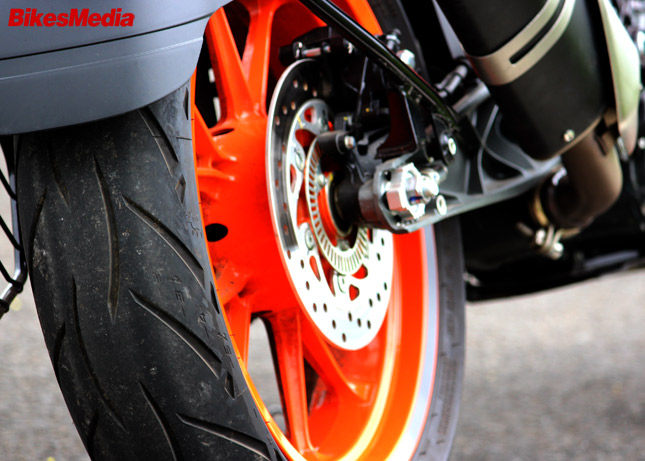 Tyres are the only thing that connects the bike to the road and affects directly how a bike performs regardless of its engine specification. The motorbike's performance depends a lot on the type of tyres you put on. Now, A separate spectrum of tyres exist alongside the world of motorcycle and an average Indian rider is more likely to buy a new set of aftermarket tyres before he installs a free flow exhaust, sprocket or brakes.
Tyres are the only thing that connects the bike to the road and affects directly how a bike performs regardless of its engine specification. The motorbike's performance depends a lot on the type of tyres you put on. Now, A separate spectrum of tyres exist alongside the world of motorcycle and an average Indian rider is more likely to buy a new set of aftermarket tyres before he installs a free flow exhaust, sprocket or brakes. RELATED ARTICLE: All You Need To Know About Your Motorcycle Tyre
Choosing the correct tyre for your ride is one thing which requires absolute knowledge of your bike’s specs, the weather in which you’re going to ride, road conditions, brakes and the list goes on. But what we can easily do is not select the wrong type of tyre for our bike and then from there, we can choose which one suit us best. In this article, we will be taking a look at a number of parameters to choose before you buy a new set of tyres for your ride.
Tyre Compounds:
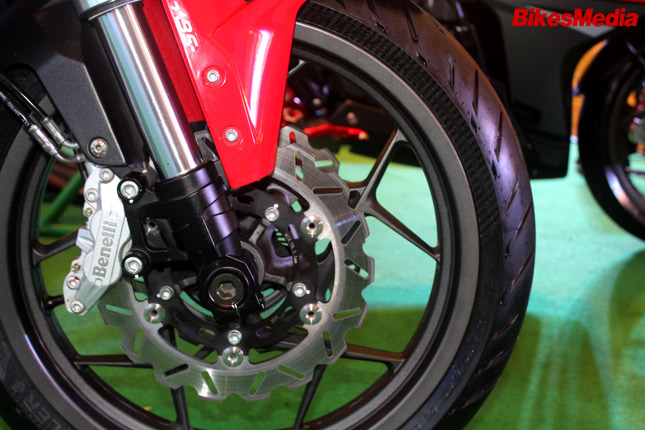 The Tyre Compound basically defines the nature of the rubber and essentially tells us how well the tyre will grip on the road. The compound of the tyre is mainly of three types, though there may be more depending upon the different type of manufacturers.
The Tyre Compound basically defines the nature of the rubber and essentially tells us how well the tyre will grip on the road. The compound of the tyre is mainly of three types, though there may be more depending upon the different type of manufacturers. 1. Soft Compound Tyres-
• The first type is Soft compound tyre, now two types of tyres mainly come under this type, they are Slicks and Hypersport. Slicks are found on MotoGP and other track bikes and Hypersport can be found in high-performance bikes like Yamaha R1. The soft nature of the compound means the grip on these tyres is really very good and they perform flawlessly but soft compound tyres with no treads can’t be used in rainy conditions. Hypersports too are 80% track and 20% street focused, these are just Slicks which are modified with some treads to make them just marginally road legal.
There are also other tyres in the lower price range from MRF and Metzeler which offer soft compound grip with superior treads, but a downfall of all the tyres in the soft compound category is that they average out very little life in them it can range from 2 track sessions to a maximum of 12000 kilometres (approx). So keep in mind, outright performance also demands outright money.
2. Hard Compound Tyres-
• The second type is Hard compound, now these are on the opposite end of the spectrum entirely, if slicks were entirely track focused then these are made just for almost everywhere but the tracks. The tyres under this category are very hard and have a high load bearing capacity. They also possess high wear resistance. Hard compound tyres are mainly found on cruisers like Harleys and Indians; they are meant for riding long distances and taking on whatever nature throws at them, be it the rain, the dirt or bad roads. There is one place where these tyres suck and that’s the corner. Being made out of a hard compound they don’t stick to the road as WELL as Soft Compound tyres and thus performance in the corners and at high speeds take a back seat, but these do average out quite a long life in them.
3. Medium/Dual Compound tyres-
• The third one is Dual compound tyres and as you can say, it’s the best of both worlds. These, as the name suggests are made up of both hard and soft compound to make it work better on both the track and the road. In these tyres, the main width of the tyre is made up of a hard compound with treads and the side wall of the tyre, above the rim of the wheel, is made up of a soft compound rubber. This ensures that you get enough grip in the corners and while riding in the rainy season. These offer performance and also a decent bang for your buck as they last quite long. Many of the sport touring tyres are of a dual compound.
• The first type is Soft compound tyre, now two types of tyres mainly come under this type, they are Slicks and Hypersport. Slicks are found on MotoGP and other track bikes and Hypersport can be found in high-performance bikes like Yamaha R1. The soft nature of the compound means the grip on these tyres is really very good and they perform flawlessly but soft compound tyres with no treads can’t be used in rainy conditions. Hypersports too are 80% track and 20% street focused, these are just Slicks which are modified with some treads to make them just marginally road legal.
There are also other tyres in the lower price range from MRF and Metzeler which offer soft compound grip with superior treads, but a downfall of all the tyres in the soft compound category is that they average out very little life in them it can range from 2 track sessions to a maximum of 12000 kilometres (approx). So keep in mind, outright performance also demands outright money.
2. Hard Compound Tyres-
• The second type is Hard compound, now these are on the opposite end of the spectrum entirely, if slicks were entirely track focused then these are made just for almost everywhere but the tracks. The tyres under this category are very hard and have a high load bearing capacity. They also possess high wear resistance. Hard compound tyres are mainly found on cruisers like Harleys and Indians; they are meant for riding long distances and taking on whatever nature throws at them, be it the rain, the dirt or bad roads. There is one place where these tyres suck and that’s the corner. Being made out of a hard compound they don’t stick to the road as WELL as Soft Compound tyres and thus performance in the corners and at high speeds take a back seat, but these do average out quite a long life in them.
3. Medium/Dual Compound tyres-
• The third one is Dual compound tyres and as you can say, it’s the best of both worlds. These, as the name suggests are made up of both hard and soft compound to make it work better on both the track and the road. In these tyres, the main width of the tyre is made up of a hard compound with treads and the side wall of the tyre, above the rim of the wheel, is made up of a soft compound rubber. This ensures that you get enough grip in the corners and while riding in the rainy season. These offer performance and also a decent bang for your buck as they last quite long. Many of the sport touring tyres are of a dual compound.
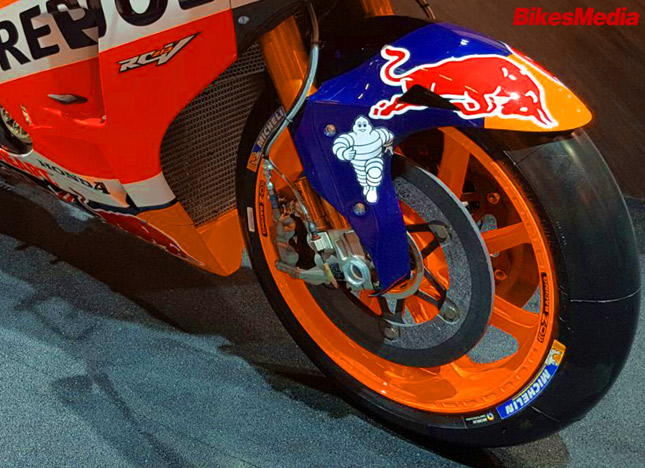 Treads on the tyre:
Treads on the tyre:In the above paragraph, you must have read this word in many sentences. Tread is basically the rubber pattern made on the tyre which makes contact with the road. Different types of treads have different types of patterns on them. On Slicks there are no treads, on Hypersports these are some, on Street, Dirt and Sports touring tyres they are adequately present.
RELATED ARTICLE: Motorcycle Tyre Treads- All You Need To know
The main function of the treads is to maintain the traction of the bike in all riding conditions, especially in rainy conditions. The more treads on a tyre, the better it will be suited for the rain. On street and sports tyres, these are present on the middle surface of the tyre as it is the part which is in contact with the road most of the time. On the other hand tyres on Dirt bikes the treads are placed as big blocks with a lot of space between two consecutive chunks.
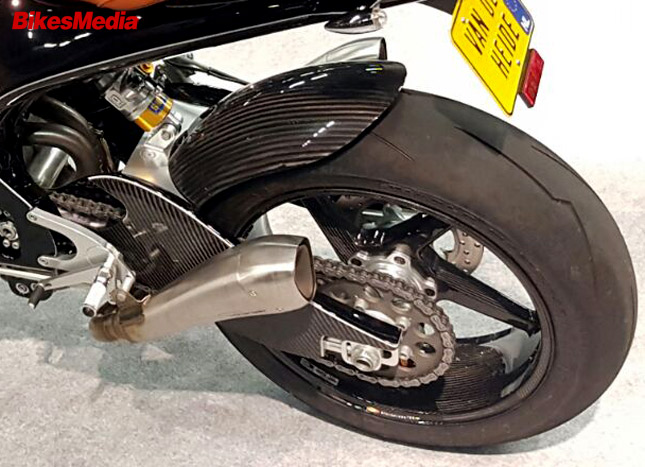 Size of the tyre:
Size of the tyre:I cannot stress this point enough; one should always choose the size of the tyre as indicated by the manufacturer. Many people do this mistake and hamper the full performance of their bike. The size of the tyre also affects the mileage of the bike. Installing a tyre bigger than the intended size will result in an increase in Rolling Resistance which will put stress on the engine thus mileage will be reduced.
RELATED ARTICLE: Importance Of Matching Front And Rear Motorcycle Tyres
In order to figure out the correct size of the tyre, we can check the Tyre Rating Code written on the side wall of our stock tyre or by referring to the owner’s manual. The Rating could be seen written in this format- '100/70 – 17'. This means that the width of the face of the tyre is 100mm, the width of the side wall of the tyre is 70% of 100, keep in mind that the second figure is always the percent of the first one. In this case, 70% of 100 is 70mm so that’s the height of the side wall. 17 is the size of the rim which is in inches.
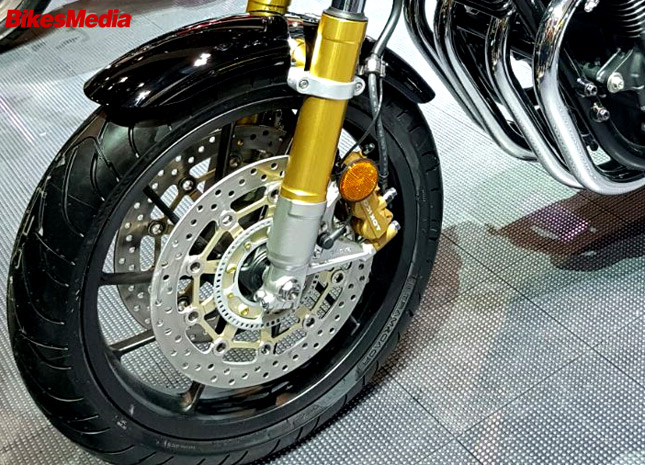 Tube Type or Tubeless Tyre:
Tube Type or Tubeless Tyre:Almost all the bikes in the premium price range today are equipped with a tubeless tyre instead of a tube, and which is a good thing. A tubeless tyre is reliable, more advanced and much safer. You can take your tubeless tyre almost anywhere without the fear of getting it punctured, even if it does get punctured it can still go on for 60-70 kilometres. The repairing of the puncture is also quite easy; with a small puncher kit one can repair a tubeless tyre all by himself.
The Carcass of tyre:
The Carcass is the internal structure buried inside the tyre and acts as its skeleton. 80% of stress on the tyre is absorbed by the carcass. These are of two types Radial and Bias. In radial tyres the tread and the sidewall can function as two different units, which results in less transversal slip and more power transfer to the ground. In Bias tyres all sidewall flex is transmitted to the tread which ultimately results in increase in slippage. This type of tyre does not remain in contact to the ground as the Radial one so it results in loss of engine power transmission.
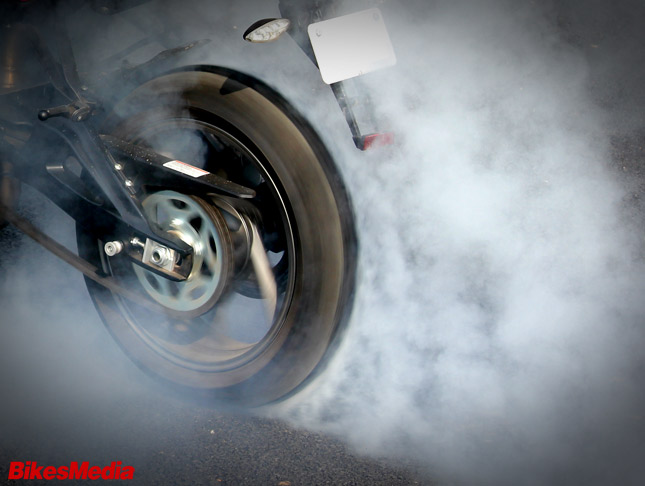 Conclusion:
Conclusion:These are all the basic things which one should keep in mind while buying a tyre. Take the bike you have, consider the places you want to take it, how much you want your tyres to last and select the one which ticks all the right boxes. If you need any questions answered do comment in the comment section below and we will make sure to reply them. For everything related to your favorite motorcycles stay tuned to BikesMedia.
By: Yetnesh Dubey











